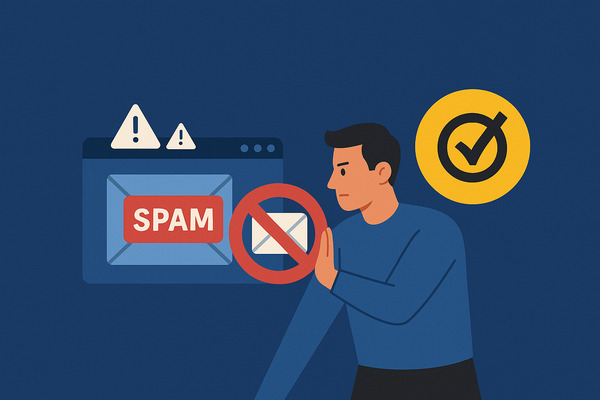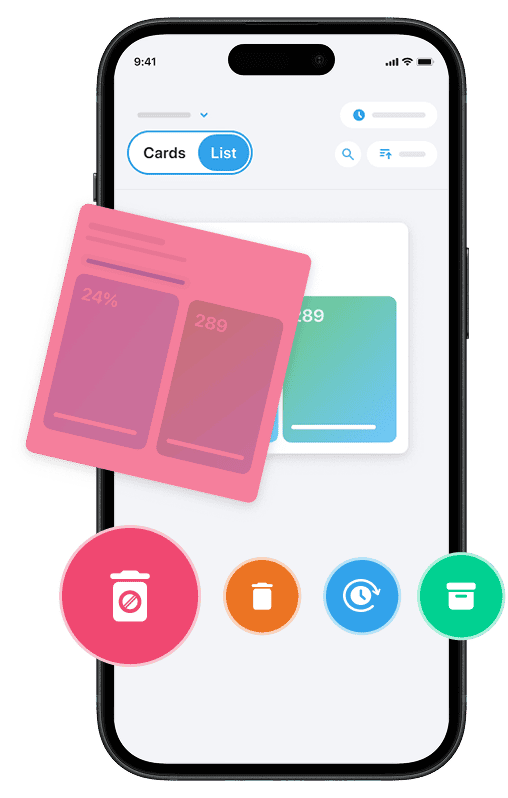If you’re tired of dealing with Norton spam emails filling up your inbox, you’re not alone. These intrusive messages often imitate legitimate Norton communications, making it challenging to tell the difference between real emails and scam emails designed to steal your personal data or trick you into clicking on dangerous attachments or links. Learning how to stop Norton spam emails effectively is essential for safeguarding your privacy and ensuring a secure digital experience.
In this article, you’ll discover simple yet effective methods to mark spam, block suspicious senders, and leverage the right spam filters and tools to keep your email inbox organized. These steps will help you avoid missing legitimate messages from Norton or your email provider, while also improving your overall email security. Take control of your inbox and save time by eliminating the hassle of sorting through unwanted emails.
And if you’d like to automatically clean your spam emails for free, you can try using our Cleanfox platform.
Identifying Norton Spam Emails
The Characteristics of Spam Emails
To effectively stop Norton spam emails, it’s essential to understand what defines an email as spam. These messages are typically unsolicited and promotional, often lacking personalization and originating from unexpected sources.
They clutter your inbox with irrelevant or deceptive content, aiming to prompt you into taking actions such as clicking on suspicious links or downloading harmful attachments. Key indicators include poor spelling or grammar, urgent language designed to create a false sense of urgency, and generic greetings like “Dear Customer.” Recognizing these traits can help you differentiate between legitimate and scam emails. If you’re ever unsure what might happen after interacting with a suspicious message, this guide explains what happens if you open a spam email.
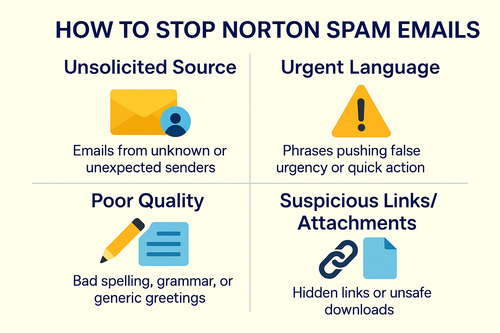
Red Flags for Norton-Branded Scams
Scammers often go a step further with Norton-branded spam emails, attempting to mimic authentic Norton communications. Watch out for suspicious or unusual sender email addresses that don’t use official Norton domains, unexpected requests to renew or cancel your subscription, and warnings about account breaches or expired security features.
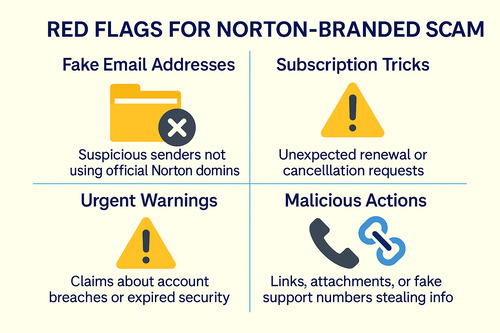
These scam emails frequently urge you to click on links, open attachments, or call fake support numbers, all with the goal of stealing your personal data or payment information. Keep in mind that official Norton emails will never pressure you to act immediately or ask for sensitive details via email. Being able to identify these spam scam emails is critical for safeguarding your security and stopping these threats before they escalate. For a deeper checklist, see how to spot and recognize a phishing email in 2025.
Immediate Strategies to Stop Norton Spam Emails
Say goodbye to spam, clutter, and chaos.
Our smart email cleaner filters out junk, organizes your inbox, and helps you focus on what really matters.
✅ Block spam automatically
✅ Organize emails by priority
✅ Keep your inbox clean
✅ Clean old emails you don’t read
📱 Available on the App Store and Google Play.
Using Email Filters Wisely
One of the fastest ways to reduce Norton spam emails is by setting up or optimizing your email spam filter. Most email providers allow you to create rules that automatically move suspicious messages to your spam folder or delete them outright. For instance, you can configure filters to recognize emails containing specific keywords, suspicious sender addresses, or domains often associated with spam scam emails.
Additionally, tools like Clean Email offer an Auto Clean feature. This tool can organize your inbox by directing legitimate Norton emails to a dedicated folder while keeping spam out. It’s an efficient way to maintain a clutter-free inbox.
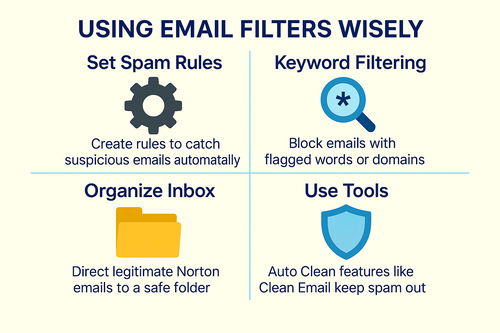
Marking Emails as Spam
Actively marking emails as spam is essential to train your email service’s spam detection algorithms. Whenever you receive a suspicious email that appears to come from Norton but raises red flags, use the mark spam function in your email client. This not only removes the unwanted email from your main inbox but also helps your email provider improve its filtering capabilities for similar spam in the future.
Remember to check your spam folder regularly to ensure no legitimate Norton emails are mistakenly flagged. If you find a legitimate email there, make sure to mark it as not spam to prevent further misclassification. If you’ve already interacted with a shady message, learn whether you can get hacked by opening an email and what to do next.
Step.1 👇
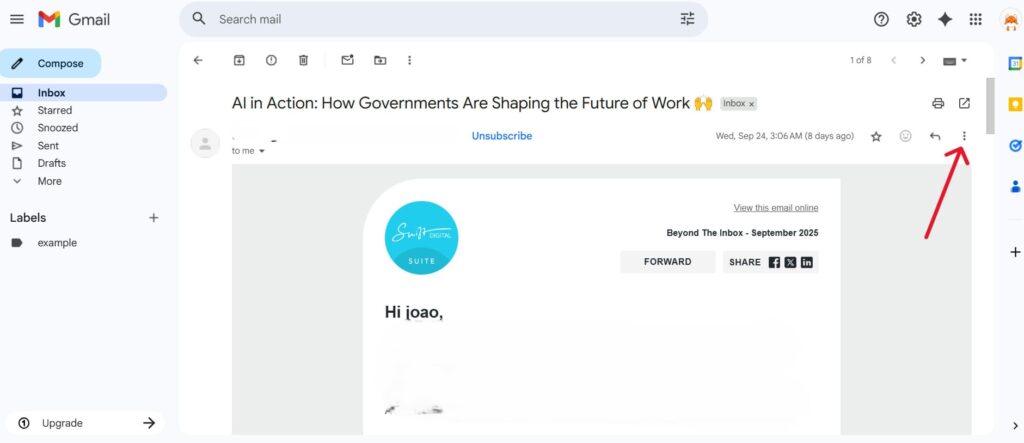
Step.2 👇
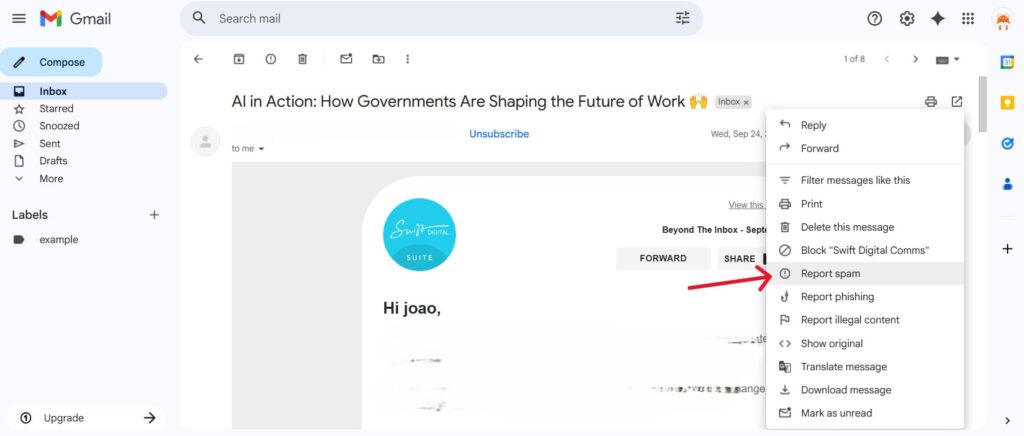
Step. 3 👇
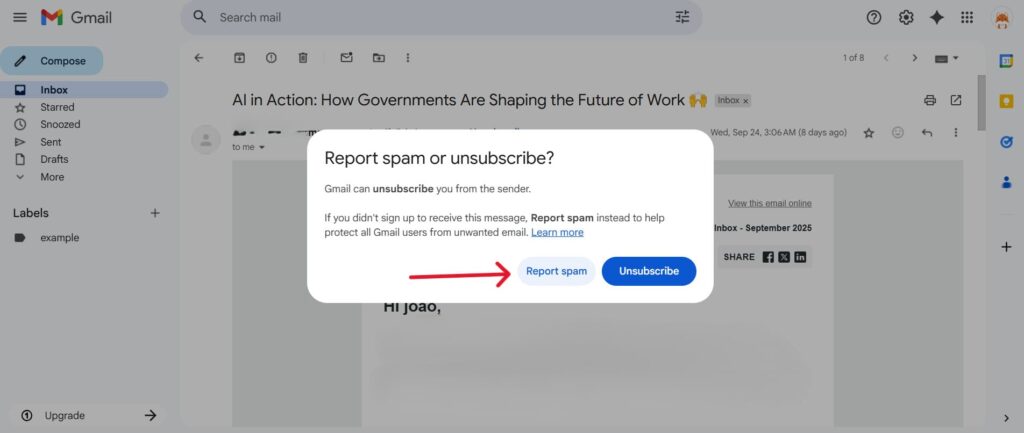
Block Known Spam Senders
Blocking emails from persistent offenders is a straightforward way to stop Norton spam emails quickly. Most email platforms allow you to block a sender directly from the message menu.
For example, in Gmail, Outlook, Yahoo Mail, or Apple Mail, you can select the email, click the options menu, and choose to block the sender. This action ensures that future emails from that address are automatically rerouted away from your inbox. It’s an effective way to keep unwanted emails out while protecting yourself from potential phishing or scam attempts.
Long-Term Solutions for Email Security
Enhancing Email Privacy Settings
To build lasting protection against Norton spam emails, consider enhancing your email privacy settings. Norton AntiTrack offers a Private Email feature that masks your real email address by creating disposable aliases. This approach helps prevent scammers and marketers from collecting your personal email, making it harder for them to send unwanted messages or track your online behavior.
Additionally, enabling email tracking protection options available in many providers like Gmail or Outlook can block hidden trackers embedded in emails, further safeguarding your privacy. These settings are vital for maintaining a secure and clutter-free inbox.
Unsubscribe from Legitimate Norton Communications
If you receive legitimate Norton emails that you no longer want, use the unsubscribe links safely embedded in those communications. This helps reduce inbox clutter without compromising your security.
Be cautious, though—avoid clicking unsubscribe links in suspicious emails, as these can be exploited by scammers to confirm your address is active, potentially increasing spam. Only unsubscribe through verified Norton channels or your account settings in the email Norton portal for added safety.
Employ Third-party Spam Filters
For enhanced long-term spam control, consider using third-party spam filters or security apps alongside your email provider’s filters. Tools like Norton Safe Email can protect multiple addresses by filtering phishing attempts, malicious attachments, and scam emails before they reach your inbox.
These solutions often provide advanced customization and real-time threat detection, helping you stay ahead of new types of Norton scam emails. By employing these tools, you can maintain a clean and secure inbox over time, ensuring peace of mind. For broader habits that reinforce protection, review these email security best practices.
Maintaining Safe Email Practices
Avoiding Public Disclosure of Your Email Address
One of the best ways to reduce the risk of Norton spam emails is to limit how often and where you share your email address. Publicly posting your email on websites, forums, or social media platforms can lead to it being harvested by spambots and sold to data brokers, increasing your exposure to unwanted emails and potential scams.
To protect your address, consider using email masking services or disposable aliases that keep your real email private. Additionally, when sharing your contact details on websites, use obfuscation techniques or alternatives that prevent automatic harvesting by automated bots.
Recognizing and Reporting Phishing Attempts
Phishing emails often impersonate trusted brands like Norton to trick you into divulging personal data or installing malware. Learning to recognize common signs—such as unexpected requests for confidential info, suspicious sender addresses, generic greetings, or urgent demands—is essential for your security.
If you receive an email that looks like a Norton LifeLock scam or any spam scam email, do not click on any links or attachments. Instead, report the email as phishing using your email provider’s tools or forward it to Norton’s official reporting address. Reporting these attempts helps improve spam filters and protects others from falling victim as well. To keep things tidy while you build safer routines, here’s how good inbox hygiene pays off: explore email hygiene: keep your inbox clean and organized.
Innovative Tools and Apps to Assist
Apps to Manage Your Inbox Efficiently
Managing your inbox effectively is a cornerstone of stopping Norton spam emails and maintaining email security. Innovative apps like Cleanfox automate the organization of your mail by grouping similar emails and allowing you to apply bulk actions, such as deleting or archiving spam messages. Features like the Unsubscriber help you easily stop newsletters or mailing lists you no longer want, preventing your inbox from filling up with unnecessary or potentially risky emails.
These intelligent tools streamline email management, making it easier to keep spam and scam emails out of sight while ensuring important communications from legitimate Norton sources stay accessible.
Norton’s Role in Combatting Spam and Phishing
Norton itself plays a vital role in protecting users from spam and phishing attempts. Through Norton LifeLock and its security suites, the company offers integrated email protection features designed to detect and block malicious content before it reaches your inbox.
These tools help identify scam emails impersonating Norton or other legitimate senders by analyzing suspicious sender addresses, scanning for harmful attachments, and flagging emails that create a false sense of urgency. Leveraging Norton’s built-in security combined with other advanced email management tools can significantly reduce the risk of falling victim to spam email scams and keep your personal data safe.
Conclusion
To effectively stop Norton spam emails, make use of your email provider’s filters and actively mark any suspicious messages as spam. Take the time to block known unwanted senders and adjust your privacy settings to safeguard your personal data. When unsubscribing from legitimate Norton communications, do so carefully, and always avoid clicking on links in suspicious emails.
Adopt safe email practices by limiting the public exposure of your email address and reporting phishing attempts as soon as you encounter them. Utilizing innovative tools like Cleanfox and Norton’s built-in security features can further bolster your defenses.
These proactive steps help you stay in control of your inbox. Keep it clean, secure, and spam-free.
FAQ
How can I distinguish between legitimate Norton emails and Norton spam emails?
To identify legitimate Norton emails, verify that the sender’s email address matches official Norton domains. Look for personalized greetings and ensure the email uses proper grammar. Be cautious of emails from random addresses, those with generic greetings like “Dear user,” or messages that urge you to click links immediately. When in doubt, visit Norton’s official website to confirm the email’s authenticity, and never download attachments from unknown sources.
What immediate steps should I take if I accidentally click on a Norton spam email link?
If you accidentally click a Norton spam email link, take these steps immediately:
- Disconnect from the internet to prevent data leaks.
- Run a full malware scan using trusted antivirus software, such as Norton 360.
- Change passwords for critical accounts and enable two-factor authentication for added security.
- Mark the email as spam and report it to Norton at spam@nortonlifelock.com.
- Update your software to the latest version and review your account activity for any suspicious actions.
How can I effectively block or filter Norton spam emails to stop them quickly and safely?
To block Norton spam emails effectively:
- Create email rules or filters that target specific sender domains to automatically mark them as spam or trash.
- Enable Norton’s built-in spam filter via its settings to redirect unwanted emails safely.
- Unsubscribe from unnecessary marketing lists and mark suspicious emails as spam to train your email provider’s filter for better accuracy.
Where can I report suspected Norton spam emails or scams?
If you come across suspected Norton spam emails or scams, forward the suspicious email to Norton’s dedicated email address: globalbrandprotection@nortonlifelock.com. This helps their team analyze and take action against phishing and scam attempts that impersonate Norton.


